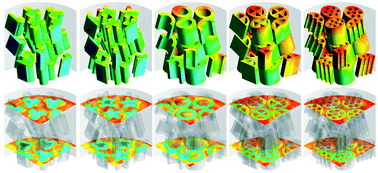A computational approach for the selection of optimal catalyst shape for solid-catalysed gas-phase reactions†
Abstract
Particle-resolved CFD simulations are performed for four industrially important solid-catalysed gas-phase reactions (methane steam reforming (MSR), water–gas shift (WGS), and methanol (MeOH) and DME synthesis) in a fixed-bed reactor. The effect of particle shape is investigated using internally and externally-shaped particles. Preliminary analysis with cylindrical particles showed higher diffusion limitation for the MSR and DME synthesis compared to the WGS and MeOH reactions. Due to a shorter diffusion length for particles with a higher surface area, a higher effectiveness factor and conversion were observed. The increase in conversion with the particle surface area correlated well with the extent of mass transfer limitation for different reactions. The 7-hole cylinder for the MSR, WGS and DME reactions and the hollow cylinder for the MeOH reaction showed the highest conversion. The conversion/ΔP decreased after a certain particle surface area due to a higher increase in ΔP compared to that in conversion. The cylcut shape for the MSR and DME and the daisy shape for the WGS and MeOH were optimal for the overall reactor efficiency.



 Please wait while we load your content...
Please wait while we load your content...